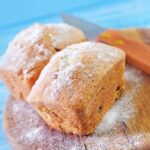Are you looking to take your cake decorating skills to the next level? One of the most crucial elements in creating beautifully decorated cakes is using stiff icing. In this article, we will delve into the world of cake decorating and explore how to make stiff icing for cake decorating, its importance, and the impact it has on the overall appearance and structure of the cake.
The type of icing used can make a significant difference in the outcome of a decorated cake. Stiff icing holds its shape well, allowing for intricate designs and details that can elevate the visual appeal of any confection. Whether you’re creating elegant wedding cakes, playful birthday cakes, or festive holiday treats, mastering the art of making stiff icing is essential for achieving professional-looking results.
This comprehensive guide will cover everything you need to know about making stiff icing for cake decorating. We will discuss different types of stiff icing, essential ingredients needed, step-by-step instructions for preparation, troubleshooting tips, coloring and flavoring techniques, storage methods, and various application and decorating techniques. By the end of this article, you’ll have all the knowledge and skills necessary to create stunning cakes with perfectly piped details and intricate designs using stiff icing.
Types of Stiff Icing
Buttercream, royal icing, and cream cheese icing are popular choices for creating stiff icing that is perfect for cake decorating. Each type of icing has its own unique characteristics and uses, making it important to understand the differences between them in order to achieve the desired stiffness for cake decorating.
Buttercream is a classic choice for cake decorating and can be made by combining butter or shortening with powdered sugar and flavorings. This type of icing holds its shape well, making it ideal for piping intricate designs and creating decorations that require precision. However, it can become too soft in warmer temperatures, so it’s important to consider the climate when using buttercream for cake decorating.
Royal icing is another popular option for creating stiff icing, especially when intricate designs or delicate details are needed. It is made from powdered sugar and egg whites or meringue powder, giving it a smooth and dense consistency that holds up well for decorating cookies, gingerbread houses, and wedding cakes. Royal icing dries hard, making it suitable for creating three-dimensional decorations and piped flowers that will hold their shape.
Cream cheese icing offers a delicious tangy flavor that pairs well with a variety of cake flavors while still providing enough stiffness for decorating purposes. It is made using cream cheese, butter, powdered sugar, and vanilla extract to create a rich and creamy texture that can be easily piped onto cakes or used for outlining designs.
However, because cream cheese icing contains perishable ingredients like cream cheese and butter, it should be refrigerated when not in use to maintain its stiffness.
| Stiff Icing Type | Description |
|---|---|
| Buttercream | Classic choice for cake decorating; made with butter/shortening, powdered sugar & flavorings; ideal for piping intricate designs. |
| Royal Icing | Made from powdered sugar & egg whites/meringue powder; dries hard; suitable for creating three-dimensional decorations & piped flowers. |
| Cream Cheese Icing | Offers tangy flavor; contains cream cheese & butter; suitable for piping onto cakes & outlining designs; should be refrigerated. |
Essential Ingredients
Making stiff icing for cake decorating requires a few essential ingredients to achieve the perfect consistency and structure. Whether you’re using buttercream, royal icing, or cream cheese icing, the key ingredients remain largely the same. Here’s a breakdown of the essential components needed to make stiff icing:
1. Powdered Sugar: Also known as confectioners’ sugar, this finely ground sugar is crucial for achieving the desired sweetness and texture in stiff icing. It creates a smooth and creamy base while adding sweetness without the grainy texture of granulated sugar.
2. Meringue Powder: This special ingredient is often used to stabilize and add volume to stiff icing, especially for royal icing. It consists of dried egg whites, sugar, and other stabilizers that help create a strong and stable structure for intricate cake decorations.
3. Cream of Tartar: When making royal icing or meringue-based stiff icing, cream of tartar is often added to improve the stability and strength of the mixture. It helps prevent crystallization and provides a smoother texture to the finished icing.
4. Shortening: In addition to butter or cream cheese, shortening can be added to stiff icing recipes to enhance its stiffness and ability to hold its shape when piped or spread onto cakes. It also contributes to a smooth finish and can withstand warmer temperatures better than butter alone.
These essential ingredients form the foundation of stiff icing for cake decorating, providing the necessary structure, stability, and sweetness for creating beautiful designs on baked goods.
Now that you understand which ingredients are essential for making stiff icing let’s dive into some expert tips & tricks on how to prepare your own:
For example:
By following these tips & tricks you’ll be able not only avoid common issues when making your own batch but also guarantee fantastic results each time you need it.
Remember that these are general guidelines on how experts advice preparing this type of frosting; make sure you follow specific instructions according if you choose a particular type such as royal or buttercream.
Step-by-Step Instructions
Making stiff icing for cake decorating requires precision and attention to detail to achieve the perfect consistency. Whether you are using buttercream, royal icing, or cream cheese icing, these step-by-step instructions will guide you through the process of making stiff icing that is ideal for decorating beautiful cakes.
To make stiff icing for cake decorating, you will need the following ingredients:
- 4 cups of powdered sugar
- 2 tablespoons of meringue powder
- 1/2 teaspoon of cream of tartar
- 1 cup of shortening
Once you have gathered all the necessary ingredients, follow these steps to make stiff icing:
- In a mixing bowl, combine the powdered sugar, meringue powder, and cream of tartar.
- Add the shortening to the dry ingredients and mix on low speed until well combined.
- Increase the mixing speed to medium-high and beat the mixture for 5-7 minutes, or until stiff peaks form.
- If the icing is too thick, add a small amount of water (no more than 1 teaspoon at a time) and continue mixing until you reach the desired consistency.
When making stiff icing for cake decorating, it’s important to check the consistency regularly to ensure that it is suitable for piping and creating intricate designs on your cakes. With these step-by-step instructions, you can achieve the perfect stiff icing every time.
These easy-to-follow guidelines will help you create stiff icing that is not only ideal for decorating cakes but also provides a smooth texture and holds its shape well. By mastering this essential skill in cake decorating, you can elevate your creations and impress your friends and family with stunning desserts for any occasion.
Tips and Tricks
When it comes to cake decorating, creating stiff icing is crucial for achieving the perfect look and structure for your cakes. However, mastering the art of making stiff icing can come with its set of challenges.
Whether you are a beginner or an experienced baker, it’s essential to know how to troubleshoot common issues that may arise during the process. Here are some expert tips and tricks to help you overcome these obstacles and create flawless stiff icing for your cake decorating projects.
One common issue that bakers encounter when making stiff icing is achieving the right consistency. If your icing turns out too thick or too thin, it can be challenging to work with and may not hold its shape when piped onto the cake.
To adjust the consistency of your stiff icing, you can simply add more powdered sugar to thicken it or a small amount of water or milk to thin it out. Gradually make these adjustments until you reach the desired stiffness for your decorating needs.
Air bubbles can also be a frustrating problem when making stiff icing for cake decorating. These air bubbles can cause imperfections in your decorations and affect the overall look of your cake. To prevent air bubbles from forming in your icing, carefully mix your ingredients together using a spatula or spoon instead of a whisk or electric mixer. Additionally, gently tap the bowl of icing on the countertop to release any trapped air before using it for decorating.
Another challenge when working with stiff icing is achieving a smooth texture. A gritty or lumpy texture can detract from the professional appearance of your decorated cakes. To achieve a smooth texture in your stiff icing, ensure that all of your ingredients are at room temperature before mixing them together. You can also use a sifter to sift powdered sugar and other dry ingredients before adding them to your mixture, resulting in a smoother and more consistent icing.
By following these expert tips and tricks for troubleshooting common issues when making stiff icing, you can overcome any challenges that may arise and create beautiful, professional-looking cake decorations with ease. With practice and perseverance, you will become more confident in working with stiff icing and unleash your creativity in cake decorating.
Coloring and Flavoring
Achieving vibrant colors and delicious flavors without compromising the stiffness of the icing is essential for successful cake decorating. When it comes to coloring stiff icing, gel food coloring is your best bet. Gel food coloring is highly concentrated, which means you can add vibrant color to your icing without altering its consistency.
Simply add a small amount of gel food coloring at a time and mix thoroughly until you achieve the desired hue. To achieve pastel shades, use less gel food coloring, and for deeper, more intense colors, gradually add more gel food coloring until you reach the desired tone.
In addition to achieving vibrant colors, adding flavor to stiff icing is equally important for creating a delicious cake. You can add flavor extracts such as vanilla, almond, or lemon directly to the stiff icing while mixing. However, it’s crucial to use clear extracts if you don’t want to alter the color of your icing.
If you prefer using natural flavors such as citrus zest or cocoa powder, be mindful of how much additional dry ingredients you are incorporating into the stiff icing as this may affect its consistency. Aim for small amounts initially and gradually increase as needed while keeping an eye on the stiffness of your icing.
Another popular method for adding flavor and color to stiff icing is by using flavored emulsions or oil-based candy flavorings. These products are designed specifically for baked goods and are available in a wide range of flavors such as strawberry, raspberry, caramel, and more.
When using these products in stiff icing, keep in mind that oil-based flavors might affect the texture slightly but shouldn’t compromise the overall stiffness too significantly if used in moderation. Always start with a small amount and adjust accordingly based on taste.
Relevant Data
| Aspect | Description |
|---|---|
| Gel Food Coloring | Highly concentrated for vibrant colors without altering consistency |
| Flavor Extracts | Use clear extracts or natural flavors in moderation to avoid altering texture significantly |
| Oil-based Flavorings | May affect texture slightly but shouldn’t compromise overall stiffness if used in moderation |
Storage and Shelf Life
Storing stiff icing properly is essential to maintaining its consistency and shelf life. Proper storage can prevent the icing from becoming too soft or dry, ensuring that it remains in perfect condition for future use. Whether you have leftover stiff icing from a decorating project or if you simply want to prepare it in advance, following best practices for storage is crucial.
Refrigerator Storage
When storing stiff icing in the refrigerator, it’s important to transfer it to an airtight container to prevent it from absorbing any surrounding odors or flavors. Make sure the container is tightly sealed to minimize exposure to air, which can cause the icing to dry out.
Store the container of icing on a flat surface in the refrigerator to maintain its smooth texture. Stiff icing can typically be stored in the refrigerator for up to two weeks without compromising its quality.
Freezer Storage
If you need to store stiff icing for an extended period of time, freezing is an excellent option. To freeze stiff icing, first ensure that it is completely sealed in an airtight container or freezer-safe bag. Squeeze out any excess air before sealing the container or bag to prevent freezer burn.
When you’re ready to use the frozen stiff icing, allow it to thaw in the refrigerator overnight. Once fully thawed, gently knead the icing with clean hands until it reaches a smooth consistency before using it for decorating.
Properly storing stiff icing not only preserves its texture and taste but also saves time and effort when preparing for future cake decorating projects. By following these best practices for refrigerating and freezing stiff icing, decorators can ensure that their creations are consistently impressive and visually stunning.
Application and Decorating Techniques
One of the most common and versatile ways to use stiff icing for cake decorating is through piping. Piping involves using a pastry bag with a decorative tip to create various designs, patterns, and textures on the surface of the cake.
Whether you’re making rosettes, stars, shells, or intricate lace patterns, stiff icing is essential for maintaining the shape and structure of the piped decorations. To achieve the best results, it’s important to ensure that your icing has the right consistency and that you have a steady hand when piping.
Another popular application of stiff icing for cake decorating is outlining and lettering. This technique allows you to add definition and detail to your cakes by creating borders, frames, and writing personalized messages. Stiff icing is particularly important for outlining as it helps maintain clean lines and prevents the colors from bleeding or blending together. Whether you’re outlining a floral pattern or writing a name on a birthday cake, using stiff icing will give your decorations crisp, sharp edges.
For more advanced cake decorating projects, such as sculpted cakes or elaborate themed designs, stiff icing is essential for creating intricate details and sculpting three-dimensional shapes. Whether you’re crafting delicate petals for a flower cake or sculpting figurines for a special occasion cake, having stiff icing will allow you to mold and shape your creations with precision.
Additionally, using stiff icing as a base layer can provide structural support for more complex designs, ensuring that your decorations stay in place and retain their shape throughout the event.
By mastering these different application and decorating techniques using stiff icing, you can elevate your cake decorating skills and bring your creative vision to life on any occasion.
Conclusion
In conclusion, creating stiff icing for cake decorating is an essential skill for any aspiring baker or cake decorator. The precise consistency and structure of the icing can have a significant impact on the final look and feel of the cake, making it a crucial element in the baking process. Whether using buttercream, royal icing, or cream cheese icing, the key ingredients such as powdered sugar, meringue powder, cream of tartar, and shortening are fundamental in achieving the desired stiffness.
Following a step-by-step guide is essential to ensure that the stiff icing is made correctly and consistently. This includes precise measurements and techniques to achieve the perfect consistency without any lumps or air bubbles. Additionally, expert tips for troubleshooting common issues when making stiff icing can be invaluable for ensuring a smooth and professional finish.
Lastly, while mastering the art of making stiff icing is important for successful cake decorating, it’s also vital to remember to have fun and experiment with different colors and flavors. Using stiff icing opens up endless possibilities for creativity and allows decorators to showcase their unique style. By following these guidelines and embracing creativity, bakers can elevate their cake decorating skills to new heights and create stunning and delicious works of art for any occasion.
Frequently Asked Questions
How Do You Make Icing Stiffer for Decorating?
To make icing stiffer for decorating, you can add more powdered sugar to thicken it. You can also try adding a small amount of cornstarch or meringue powder to help stiffen the icing without affecting the flavor.
What Can I Add to Buttercream to Make It Stiffer?
If you want to make your buttercream stiffer, you can add additional powdered sugar to increase its thickness. Another option is to incorporate a small amount of cornstarch or meringue powder into the buttercream to help it hold its shape when decorating.
What Icing Is Best for Cake Decorating?
The best icing for cake decorating depends on personal preference and the specific type of decoration being used. Buttercream is versatile and easy to work with, while royal icing dries hard and is great for intricate designs.
Fondant provides a smooth, polished look, but may not be as tasty as other options. Ultimately, the best icing for cake decorating will depend on the desired outcome and the decorator’s skill level.

Welcome to my blog about home and family. This blog is a place where I will share my thoughts, ideas, and experiences related to these important topics. I am a stay-at-home mom with two young children. I hope you enjoy reading it! and may find some helpful tips and ideas that will make your home and family life even better!





